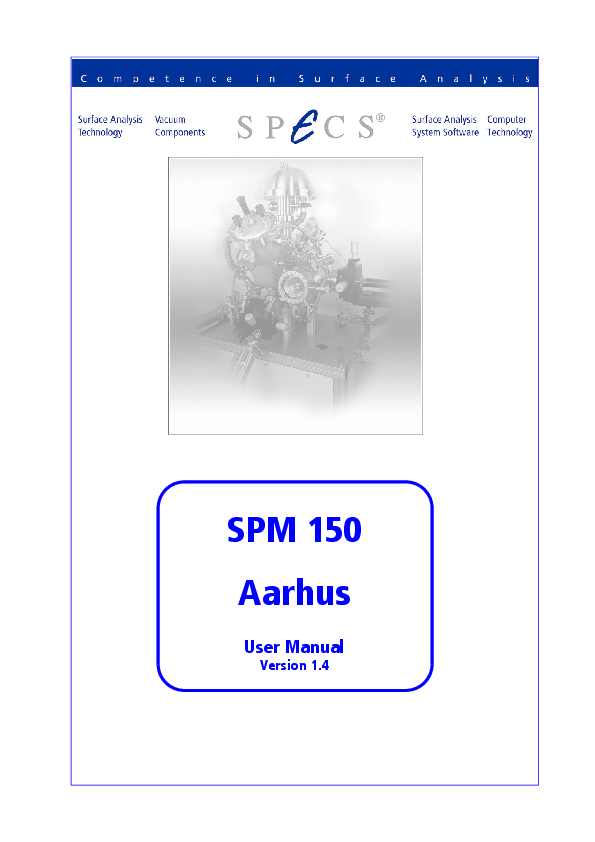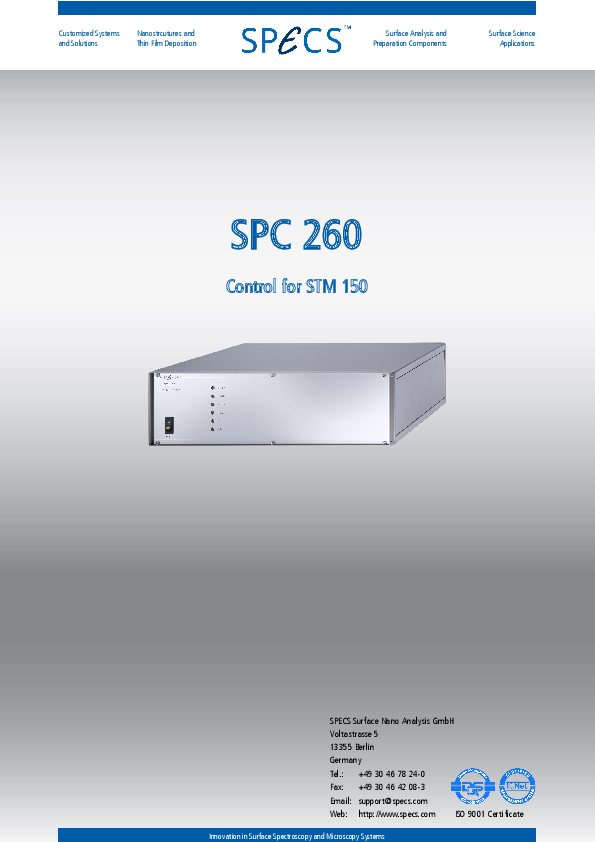
SPM Aarhus 150 NAP
Extremely stable and highly versatile SPM Aarhus 150 SPECS for ultimate near ambient pressure scanning probe microscopy applications
Investigations of catalytic reactions on the surfaces and the attempt to bridge the pressure and material gap between UHV and “real world” applications require an ultra-stable and reliable SPM able to operate in extreme conditions. Once again, the stability and simplicity of the SPM Aarhus design allowes for the extension of the applications in the pressure range between UHV and 100 mbar by developing special near ambient pressure (NAP) design. For this SPM Aarhus head is mounted in side of an in-situ reactor cell made of inert materials (or coated with non-reactive material). By doing so, only the inside of a little reactor cell is flooded with the gas. Easy and fast on-site switch between UHV and near ambient pressure applications is possible by opening a lid on top of the reactor cell. A halogen lamp heater for high temperature applications is mounted directly on the lid allowing imaging of all kinds of samples at temperatures exceeding 850 K in UHV and 550K at 10 mbar. In-situ tip/sensor preparation by ion sputtering is still feasible when the lid of the reactor is open. A direct in-situ optical access to the sample during measurements at near ambient pressures can be used for investigation of photo catalytic reactions. Both STM tips as well as the KolibriSensor™ can be used with the system without any compromises on its stability.
SPECIFICATIONS
| Mounting Flange | 150CF |
| Control Electronics |
|
| Temperature Stability | 0.1 K |
| Sensitivity z Range | ±175 nm |
| Drift Rate | < 0.05 nm/min (vert), < 0.15 nm/min (lat) |
| Stability | < 10 pm |
| In-Situ Access | Specular |
| Scan Range | 1.200 nm x 1.200 nm |
| Temerature Control | 2 controlled subsystems for sample & scanner |
| Operating Modes |
|
| Sensors |
|
| Optional Accessories |
|
| Required Accessories |
|
| Working Pressure | 10-11 to 100 mbar |
SPARE PARTS

Only for Release 1 NAP-SPM. This Kolibri Sensor is our AFM sensor adapted for the Aarhus NAP scanning probe microscope setup which allows atomic force measurements by means of the closed loop feedback of a 1GHz oscillation.

This Kolibri Sensor is our AFM sensor adapted for the Aarhus NAP scanning probe microscope setup which allows atomic force measurements by means of the closed loop feedback of a 1GHz oscillation.

This replacement unit for our Aarhus NAP SPM contains z-motor for tip coarse approach and the scanning piezo for fine XYZ-tip motion. Including a temperature sensor and motor heating facility.





